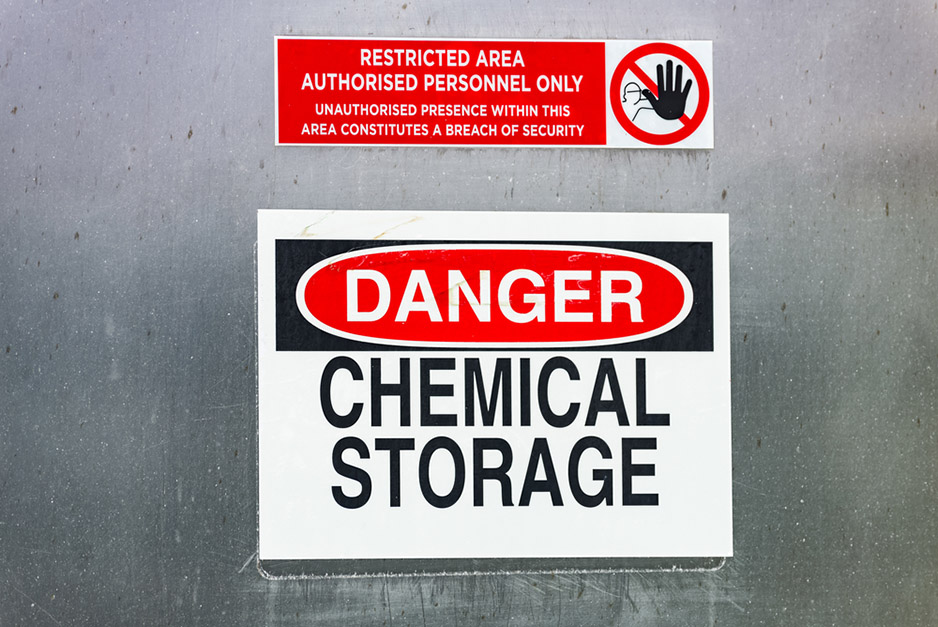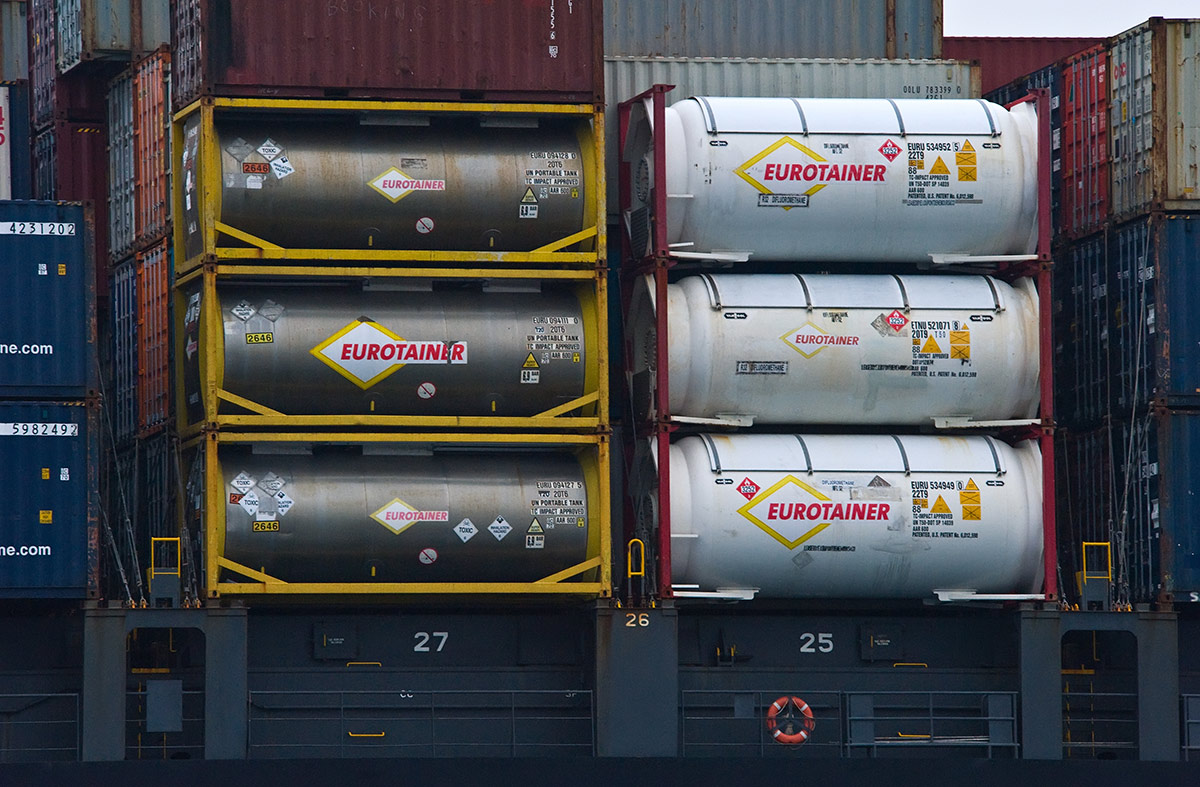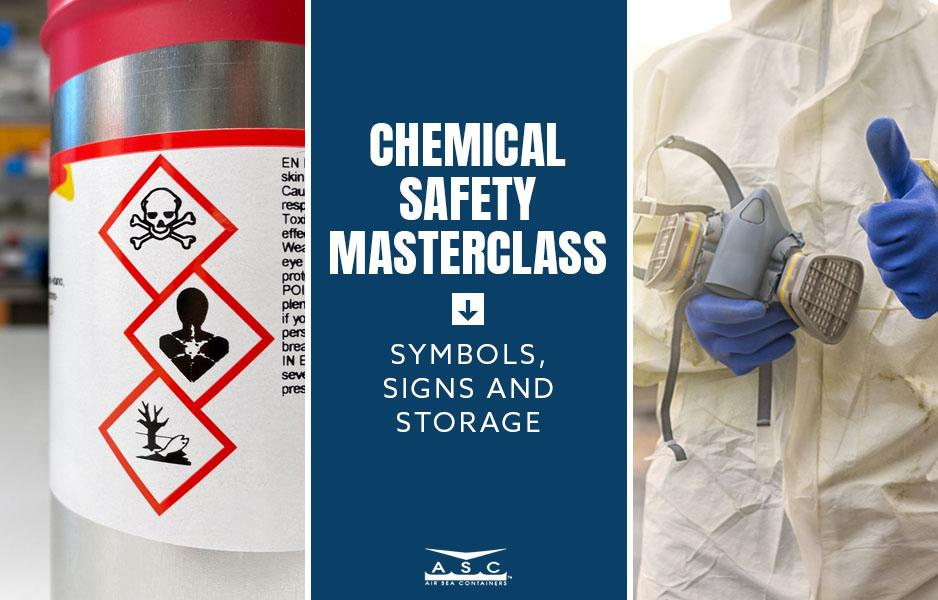Source: hbpictures/Shutterstock.com
Summary:
- OSHA regulates chemical storage safety. Improper storage may be a violation of the law.
- Always keep Safety Data Sheets for every chemical in the inventory.
- Understanding GHS Hazard Classes and the Segregation and Storage Table is critical for safe, long-term storage.
- Some chemicals may degrade or destabilize over time. Avoid storing these compounds for excessive periods and follow safe disposal procedures
Any workplace or setting that frequently handles chemicals must also possess suitable chemical product storage space. However, it isn’t enough to simply have sufficient space to store everything. You must also respect specific safety rules to minimize the risk of a chemical incident.
Follow these chemical storage guidelines to create a safe and legally-compliant chemical storage environment. Understand what circumstances can compromise chemical safety and learn how to prevent chemical accidents.
Legal Aspects of Chemical Safety
Following safe and appropriate chemical handling and storage protocols for all chemical products on hand is not a recommendation. They are part of OSHA’s laws and regulations under 29 CFR 1910.
According to the law, every workplace must have a complete list of Safety Data Sheets (SDS) applicable to all chemicals and hazardous materials in the workplace. SDSs are typically provided by the manufacturer and contain complete safety and technical information, including storage recommendations.
Safe Flammable Cabinets for Secure StorageGeneral Guidelines for Safe Chemical Storage
You can follow many general guidelines to promote and enhance chemical storage safety. Here are some of the most critical:
- All chemical containers must feature proper, clearly legible labeling, including the chemical’s name, corresponding hazmat placards and other hazard warnings.
- Do not store any chemical products higher than eye level, and do not place them on the topmost level of a shelf or storage unit.
- Avoid overcrowding your storage units, keep all cabinet doors closed and always use shelving with anti-roll lips.
- Do not store chemicals on the floor or in traffic aisles, even temporarily.
- Keep all stored chemicals away from heat and exposure to direct sunlight, especially flammable containers (e.g., gasoline-filled jerricans).
- Keep the following equipment within easy reach at all times: emergency phone numbers, fire equipment, first aid, CPR supplies, spill control supplies, PPE and emergency eyewash or shower equipment. Ensure all personnel is familiar with how to use this equipment.
- Watch for unusual or unsafe conditions in the storage area and address them as soon as possible: leaks, spills, improper temperature, poor lighting, blocked exits, open flames, improper labeling, etc.
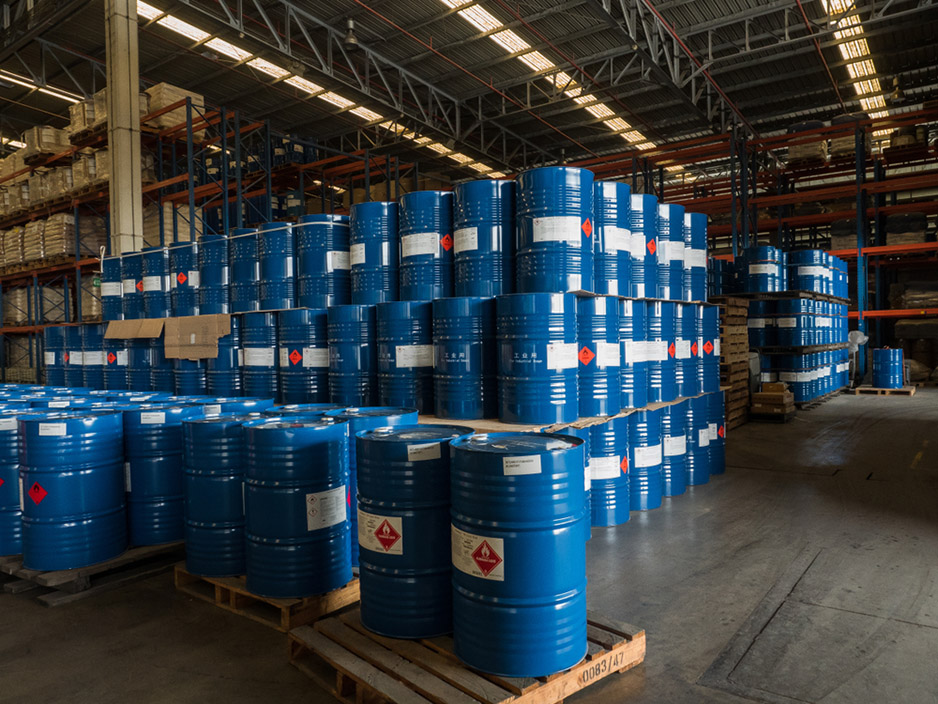
Source: Thanakornbb/Shutterstock.com
Chemical Segregation Guidelines
Even when stored in the appropriate containers, many chemical products are incompatible, meaning that keeping them in close proximity creates a safety risk. The best way to prevent chemical incompatibility incidents is to follow chemical segregation guidelines.
All hazardous chemicals belong to one of 29 Hazard Classes defined under the Globally Harmonized System (GHS). Each class has distinct general storage requirements, a list of incompatibilities and a list of potential risks and reactions if stored with incompatible chemicals.
For example, toluene is categorized as a GHS Flammable Liquid (Hazmat Class 3). According to OSHA safety recommendations, you should store flammable materials in a dedicated flammable cabinet, refrigerator or equivalent storage unit. The storage unit must also be suitable for hazardous storage (fireproof or explosion-proof).
As a flammable liquid, do not store toluene in the same unit as chemicals of the following categories:
- Oxidizers
- Acids
- Bases
- Explosives
- Poisons and toxins
Storing toluene and incompatible chemicals in the same unit is a severe fire hazard and a significant risk of causing violent explosive or exothermic (extreme heat) reactions.
Refer to the NIH Chemical Segregation and Storage Table for a comprehensive list of safe storage guidelines and incompatibilities for each class.
Label Your Containers with Hazmat PlacardsAdditional Chemical Safety Tips
Here are additional safety tips to follow to increase chemical safety in the workplace.
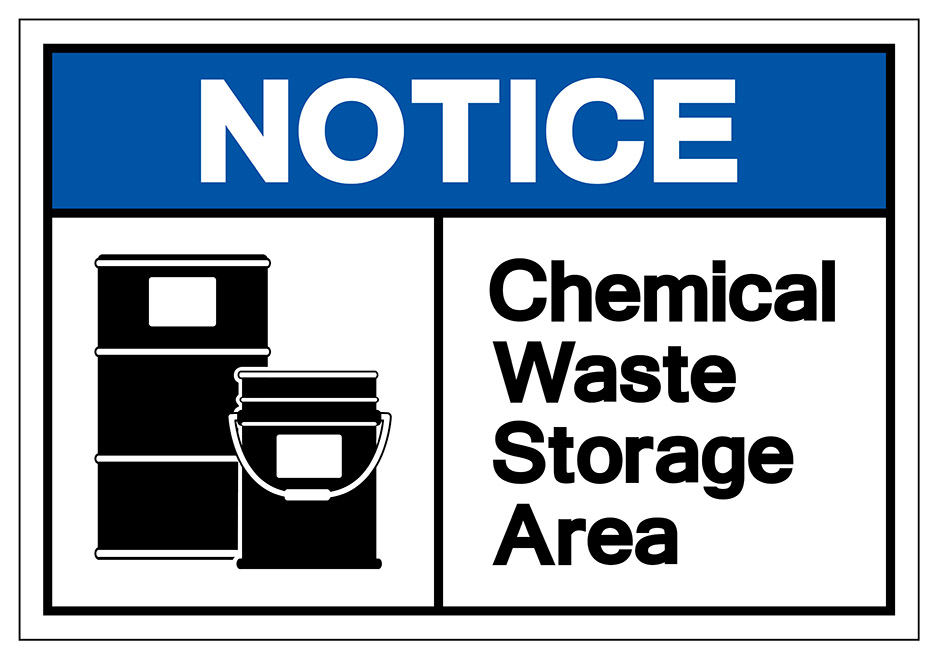
Source: Technicsorn Stocker/Shutterstock.com
Old chemicals and hazardous waste
Minimize hazardous waste storage as much as possible because it presents unique risks like degradation or destabilization.
Here are tips to follow for proper storage and disposal of hazardous waste:
- Old and expired chemical compounds are some of the most common types of hazardous waste. Check the SDS of each chemical for maximum storage time and potential risks.
- Label hazardous waste using dedicated containers and store it separately from other chemicals in the workplace.
- Do not store hazardous waste for more time than strictly necessary. The best way to dispose of hazardous waste is to follow the EPA hazardous waste disposal guidelines.
Storage of peroxidizable compounds
Many chemical products are peroxidizable compounds, meaning that they react to oxygen in the air and form highly explosive peroxides over time.
These chemicals have a use-by date of 3, 6 or 12 months after opening. Keep these chemicals stored away from light and heat, and do not order more than you can use within these storage periods.
If you reach the storage deadline before using your reserves of peroxidizable compounds, refer to each product’s SDS and follow all appropriate disposal protocols.
There are three categories of peroxidizable compounds:
- List A: Severe Peroxide Hazard
-
- Storage duration: 3 months
- Examples: Diisopropyl ether, potassium metal, sodium amide
- List B: Peroxide Hazard on Concentration
-
- Storage duration: 6 months
- Examples: Diacetylene, vinyl ethers
- List C: Rapid Polymerization Hazard
- Storage duration: 12 months
- Examples: Acrylic acid, styrene, vinyl acetate
Your Chemical Safety Partner
Air Sea Containers has over 30 years of experience providing customers with safe, UN-rated and OSHA-compliant packing products. We offer a comprehensive selection of containers, packaging materials and storage cabinets suitable for hazardous material storage.
Contact us today for a quote or more information regarding chemical safety and hazmat storage.

